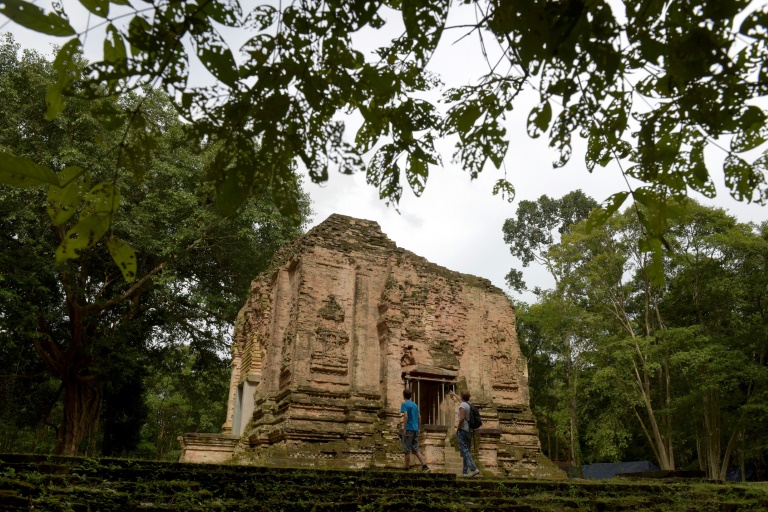Alleged kidnapping kingpin Faizel Charloos arrested after fleeing court
It has survived centuries of monsoon rains, a US bombing campaign and rampant looting.
Now the ancient temple city of Sambor Prei Kuk in Cambodia is finally ready for a renaissance — and is teasing tourists to its forest-cocooned ruins.
Cloistered by trees and linked by winding dirt trails, the site has played second fiddle to its much bigger cousin to the west — Angkor Wat — Cambodia’s top tourist destination.
But in July it gained a listing by the UNESCO World Heritage, promising a tourist bonanza that could breathe new life into a once-thriving 6th and 7th century metropolis.
“We have already seen more and more local and foreign tourists flocking to visit our site,” said Hang Than, an official who manages the compound, as he strolled towards one of several temples spectacularly wrapped in tree roots.
For now the tourist infrastructure is basic.
The ancient city in central Kampong Thom province lies down a pot-holed road where a few food hawkers cluster beneath umbrellas in the dusty parking lot.
Several tour guides lounge around a small booth servicing a growing fleet of tour buses that arrive, for now, mainly on weekends.
“We are very happy and we were so surprised that this site has been listed,” said 45-year-old Mao Sambath, who has been making the hour-long motorcycle ride to sell a spread of tropical fruits to backpackers and Chinese tour groups.
“Today we have even more vendors than yesterday.”
– Trees and looters –
Sambor Prei Kuk, which means “the temple in the richness of the forest”, boasts nearly 300 brick temples and heaps of ruins across a 25 square kilometre (nine square mile) compound.

The temples of Sambor Prei Kuk were rediscovered by French scholars in the 1880s and it took decades to pare back tree roots and lumps of earth that had consumed the monuments over the centuries
The city, some 200 kilometres (120 miles) north of Phnom Penh, was once the seat of the Chenla kingdom that flourished in the 6th and 7th centuries before the height of the Khmer Empire that raised the mega-city of Angkor.
The temples were rediscovered by French scholars in the 1880s when Cambodia was part of France’s Indochina empire.
It took decades to pare back tree roots and lumps of earth that had consumed the monuments over the centuries.
“At first they only found 16 temples, but then they started to clean the sites,” explained Hang Than, an archaeologist by training.
But the excavation halted as Cambodia fell into war, with a hailstorm of US bombs hitting the area during the Vietnam War in the 1970s, leaving behind hundreds of craters.
Destruction continued under Cambodia’s ruthless Khmer Rouge regime, whose soldiers still held the area into the 1980s as looters ransacked heirlooms from the site.
After the violence subsided in the late 1990s, restoration efforts were rebooted.
With help of Japanese partners, conservationists spent decades hacking back trees and stabilising the structures.
The painstaking work was rewarded with the UNESCO listing, which carries fresh funds to preserve the temples and manage the impact of tourism.
“It was very different when I first started to work in this area,” said Lay Alex, a baby-faced 24-year-old who began leading tours a decade ago.
“I don’t think seven guides is going to be enough anymore,” he said with a smile.
Download our app